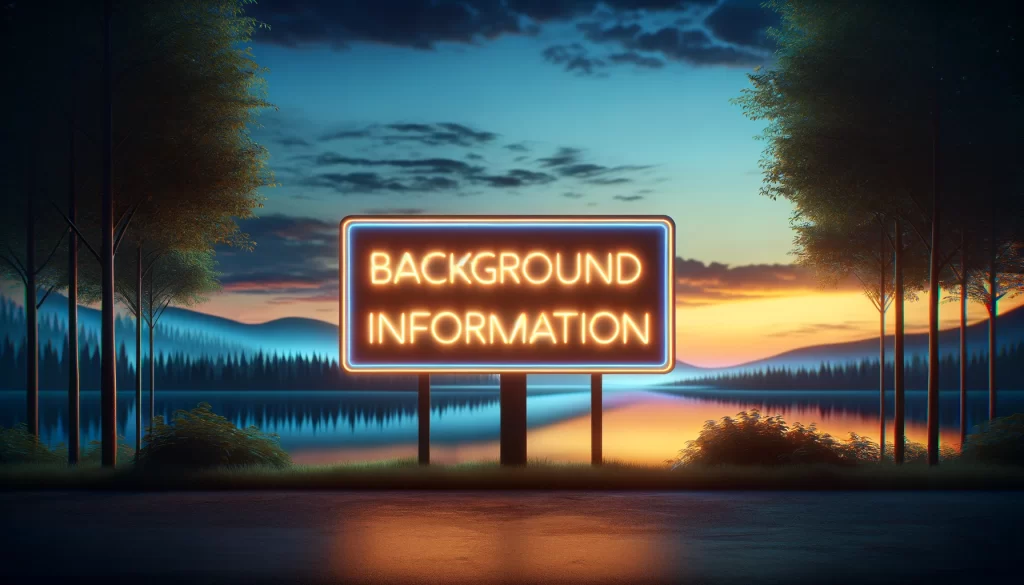February 6, 2025 – President Donald Trump has suggested that the United States should take over the Gaza Strip and permanently relocate its Palestinian residents elsewhere. His comments, made during a meeting with Israeli Prime Minister Benjamin Netanyahu at the White House and later reinforced on social media, have sparked global controversy and criticism. While Trump claims this plan would bring stability and economic opportunity, many world leaders and experts have raised concerns over its feasibility and its implications for international law.
Trump’s Proposal for Gaza
Trump’s statements about Gaza mark one of the most radical proposals concerning the region. He argued that Gaza, after over 15 months of war between Israel and Hamas, had been reduced to a “demolition site” and should not be rebuilt for Palestinians. Instead, he envisions the U.S. taking ownership of the territory and developing it into an economic hub. During a press conference, he stated, “The U.S. will take over the Gaza Strip, and we will do a job with it. We’ll own it and be responsible for dismantling all the dangerous unexploded bombs and other weapons, level the site and get rid of the destroyed buildings, level it out, create an economic development that will supply unlimited numbers of jobs and housing for the people of the area.”
A key aspect of Trump’s proposal is the permanent relocation of Palestinians from Gaza to other countries. He suggested that Palestinians could be moved to “far safer and more beautiful communities, with new and modern homes, in the region.” He argued that Palestinians should not return to Gaza even after it is rebuilt, stating, “Why would they want to return? The place has been hell.” Trump also proposed that neighboring countries such as Jordan and Egypt should take in displaced Palestinians, although these nations have not shown willingness to do so.
Trump insisted that his plan would not require American military involvement, writing on Truth Social, “No soldiers by the U.S. would be needed! Stability for the region would reign!!!” He also declared that he would work with “great development teams from all over the world” to transform Gaza into what he described as “one of the greatest and most spectacular developments of its kind on Earth.” However, his statements have raised questions about how such a plan would be implemented, who would govern Gaza, and whether Palestinians would accept being permanently displaced.
Reactions to Trump’s Plan
Trump’s proposal has been met with strong opposition from Palestinian leaders, international organizations, and human rights groups. Palestinian Authority President Mahmoud Abbas condemned the plan, calling it “a serious violation of international law” and stating that Palestinian leaders “will not allow any infringement on the rights of our people.” Many critics have argued that forcibly removing Palestinians from Gaza would constitute ethnic cleansing, as the forced deportation or transfer of a civilian population is considered a violation of international humanitarian law.
The Israeli government has not officially responded, but Israeli Defense Minister Israel Katz has expressed some support for elements of Trump’s plan. Katz announced that he had ordered the Israeli military to “draft a plan to allow people to voluntarily leave” Gaza. He suggested that there could be “exit options via land crossings, as well as special arrangements for departure by sea and air.” However, he did not specify whether displaced Palestinians would be allowed to return in the future.

The international community remains divided on the issue. Some Israeli right-wing politicians have celebrated Trump’s proposal, as they have long supported the idea of encouraging Palestinian emigration from Gaza. However, many global leaders have strongly opposed it. Spain’s Foreign Minister José Manuel Albares rejected the idea, saying, “Gazans’ land is Gaza, and Gaza must be part of the future Palestinian state.”
Historical Context and Concerns
Trump’s plan has also raised painful historical memories for Palestinians. Many see it as a repeat of the “Nakba” of 1948, when approximately 700,000 Palestinians fled or were forced from their homes during the creation of Israel. The majority of United Nations member countries recognize Gaza as part of an independent Palestinian state, but both Israel and the United States have refused to grant Palestinian statehood.
The situation in Gaza is particularly challenging due to its long-standing restrictions. Since Hamas took power in 2007, Israel and Egypt have maintained a strict land, air, and sea blockade on Gaza, limiting the movement of people and goods. More than 2.2 million Palestinians currently live in Gaza, with most facing dire humanitarian conditions, including a lack of food, water, and medical supplies.
The question of whether Palestinians would leave Gaza voluntarily remains uncertain. While many civilians have been displaced due to the war, there has been strong resistance to permanent relocation. In previous conflicts, Palestinians have often chosen to remain despite difficult conditions rather than leave their homeland. Meanwhile, neighboring countries, such as Egypt and Jordan, have shown little willingness to accept large numbers of Palestinian refugees, fearing economic and political instability.
Uncertain Future
Trump’s plan remains highly controversial, and it is unclear whether it will move forward. His administration has not provided concrete details about how the proposal would be implemented, where displaced Palestinians would be resettled, or whether they would be allowed to return to Gaza in the future.
The ceasefire negotiations between Israel and Hamas are still ongoing, but the long-term future of Gaza remains uncertain. While Trump envisions Gaza as a “spectacular development,” many critics argue that his proposal disregards Palestinian rights and does not address the broader conflict between Israel and Palestine.
This article is based on the following articles:
https://thehill.com/homenews/administration/5126689-trump-palestinians-resettlement
https://www.yahoo.com/news/trump-defends-gaza-proposal-says-160802994.html

Background Information
1. The Gaza Strip: Geography and Importance
The Gaza Strip is a small, densely populated coastal region in the Middle East, bordered by Israel to the east and north, Egypt to the south, and the Mediterranean Sea to the west. It is about 25 miles long and 5 to 7 miles wide, making it one of the most crowded places on Earth. The population of Gaza is over 2.2 million people, most of whom are Palestinian Arabs.
Gaza has been at the center of the Israeli-Palestinian conflict for decades due to its strategic location and political significance. It has often been described as an open-air prison because its borders have been tightly controlled by Israel and Egypt since 2007. The restrictions have made it difficult for Palestinians to leave, trade, or access resources.
2. The Israeli-Palestinian Conflict: A Brief History
The Israeli-Palestinian conflict is one of the most long-standing and complex conflicts in the world. It is primarily a struggle over land and national identity between Jews and Arabs in the region of historic Palestine.
The Origins of the Conflict
- Late 1800s–1947: The Zionist movement, which sought to create a Jewish homeland, gained momentum. Many Jewish people migrated to Palestine, which was then under Ottoman and later British control.
- 1947–1948: The United Nations proposed a partition plan, dividing Palestine into separate Jewish and Arab states, but Arab nations rejected the plan. In 1948, Israel declared independence, and a war broke out between Israel and neighboring Arab countries. Hundreds of thousands of Palestinians fled or were forced from their homes in what became known as the Nakba (“catastrophe”).
- 1967 (Six-Day War): Israel fought against Egypt, Jordan, and Syria, capturing the West Bank, East Jerusalem, and Gaza Strip. These areas remain disputed today.
- 1993 (Oslo Accords): Peace talks led to the creation of the Palestinian Authority (PA), which was given some control over Gaza and parts of the West Bank.
3. Who Governs Gaza Today?
Since 2007, the militant group Hamas has controlled Gaza. Hamas is considered a terrorist organization by Israel, the U.S., and other Western countries. The group does not recognize Israel and has engaged in violent conflicts, launching rocket attacks into Israeli cities. In response, Israel has carried out airstrikes and military operations in Gaza, often leading to significant civilian casualties.
Israel and Egypt have imposed a blockade on Gaza since Hamas took control, restricting the movement of goods and people. The blockade has created severe humanitarian issues, with many Gazans lacking access to basic necessities like clean water, food, and medical care.
4. Previous Wars and Ceasefires
The conflict between Israel and Hamas has resulted in multiple wars and smaller military operations. Some key conflicts include:
- 2008–2009: Israel launched Operation Cast Lead after Hamas fired rockets into Israel.
- 2012: An eight-day conflict erupted between Israel and Hamas.
- 2014: A war lasting 50 days led to significant destruction in Gaza.
- 2021: A brief but intense conflict resulted in hundreds of Palestinian deaths.
Ceasefires have been brokered by countries like Egypt, Qatar, and the United States, but they often do not last long before violence resumes.
5. The Concept of Statehood and International Law
What Is a Country?
For a region to be officially recognized as a country, it typically needs:
- A defined territory.
- A permanent population.
- A government that controls the area.
- Recognition by other countries and the United Nations (UN).
Many Palestinians and their supporters argue that Gaza and the West Bank should be part of an independent Palestinian state. However, Israel and the United States do not recognize Palestine as a full state, arguing that key security concerns need to be addressed first.
The Two-State Solution
Many world leaders have proposed a two-state solution, where:
- Israel would exist as a Jewish state.
- Palestine (including Gaza and the West Bank) would exist as an independent Arab state.
The two-state solution has not been achieved because of political disagreements, violence, and territorial disputes.
6. Refugees and International Law
Who Is a Refugee?
A refugee is someone who leaves their home due to war, persecution, or natural disasters. There are over 5.9 million Palestinian refugees worldwide, many of whom live in the West Bank, Gaza, and neighboring countries like Jordan and Lebanon.
The Rules on Forced Relocation
Under international law, it is generally illegal to forcefully remove people from their land. This is considered a war crime and a violation of human rights. Many human rights groups have argued that Trump’s proposal to permanently relocate Palestinians from Gaza violates international law.
7. The Role of the United States in the Middle East
The United States has been heavily involved in the Israeli-Palestinian conflict for decades. The U.S. is a strong ally of Israel, providing it with military aid and diplomatic support. However, different U.S. presidents have had different approaches:
- Bill Clinton (1993–2001): Helped negotiate the Oslo Accords.
- George W. Bush (2001–2009): Supported Israel’s right to defend itself against Hamas.
- Barack Obama (2009–2017): Pushed for peace talks but was critical of Israeli settlements.
- Donald Trump (2017–2021, 2025–Present): Moved the U.S. embassy to Jerusalem, recognizing it as Israel’s capital, and brokered the Abraham Accords to normalize relations between Israel and some Arab nations.
Trump’s new proposal for Gaza is one of the most extreme U.S. policy suggestions in history, as no previous American president has suggested taking control of Gaza or permanently relocating Palestinians.
8. The Challenges of Rebuilding Gaza
Gaza has been devastated by war, with many areas reduced to rubble. Rebuilding the territory would require:
- Removing unexploded bombs and debris.
- Restoring electricity, water, and healthcare.
- Rebuilding homes, schools, and businesses.
- Creating jobs and economic opportunities.
Many experts believe rebuilding Gaza would cost billions of dollars and require years of effort. There are also questions about who would govern Gaza after it is rebuilt—Israel, the Palestinian Authority, or another group.

Debate/Essay Questions
- Should the forced relocation of a population ever be considered an acceptable solution to war and conflict?
- Does Trump’s proposal violate international humanitarian law, or is it a practical solution for ensuring long-term peace?
- Who has the right to decide the future of Gaza—the international community, Israel, the U.S., or the Palestinian people?
- What lessons can be learned from previous wars and peace negotiations in the Israeli-Palestinian conflict?
- What are the potential benefits and risks of Trump’s proposal for Israel?
Please subscribe to Insight Fortnight, our biweekly newsletter!
